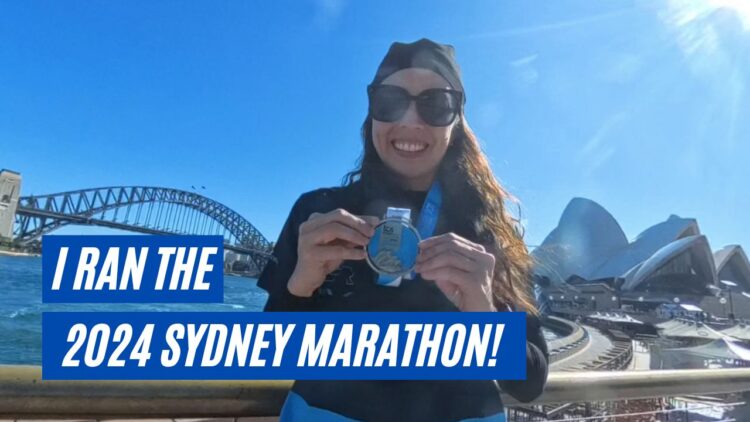It’s now three weeks since I ran my fifth marathon at the TCS Sydney Marathon, powered by Asics. I did a race week wrap on my Youtube channel a few days ago, but realized I had more to say.
Additionally, in the months I was training I tried to do my research on Sydney Marathon editions of years past, but found very few posts and websites with the kind of information I wanted to know — a lot of it from random Reddit posts. But since the course has changed from last year, maybe it’s my duty to write something updated that will be useful for runners like me if they want to do the Sydney Marathon.
It’s positioning itself as the seventh World Marathon Major (results of which we will find out soon enough), but I’ve looked at the Six Stars website and it looks like the series won’t become “Seven Stars”. But I definitely think as a race Sydney stands on its own and is a must-do, Star or not.
Here’s my vlog report of the race. Scroll down for some more additional info as well as tips for race week!
Registration
I registered through an Endurance Travel promo which included the race entry, free Sydney Opera House tour, and membership to the Candidacy Club for the price of $150 AUD (approximately $120 USD). I’m not sure if they will once again offer promos for next year, but do check them out for marathon and active travel packages as well.
Where to Stay
I attempted to book a few hotels around Sydney, but always ended up cancelling them because I would read in a review that they had no air conditioning and no elevator. (As you know, post-marathon and stairs do not go together well.)
Thankfully, Endurance Travel and Race Roster had a Capitol Hotel promo which was priced at $200 AUD/night (versus the regular rate at that hotel which is $600 AUD/night). Capitol Hotel is in the Haymarket area and sits right next to a light rail stop and a few hundred meters away from a metro stop, so it’s super well-connected.
As a bonus, it was also the hotel where the Endurance Travel Philippines organizers and influencers were billeted, so I had friends around me!
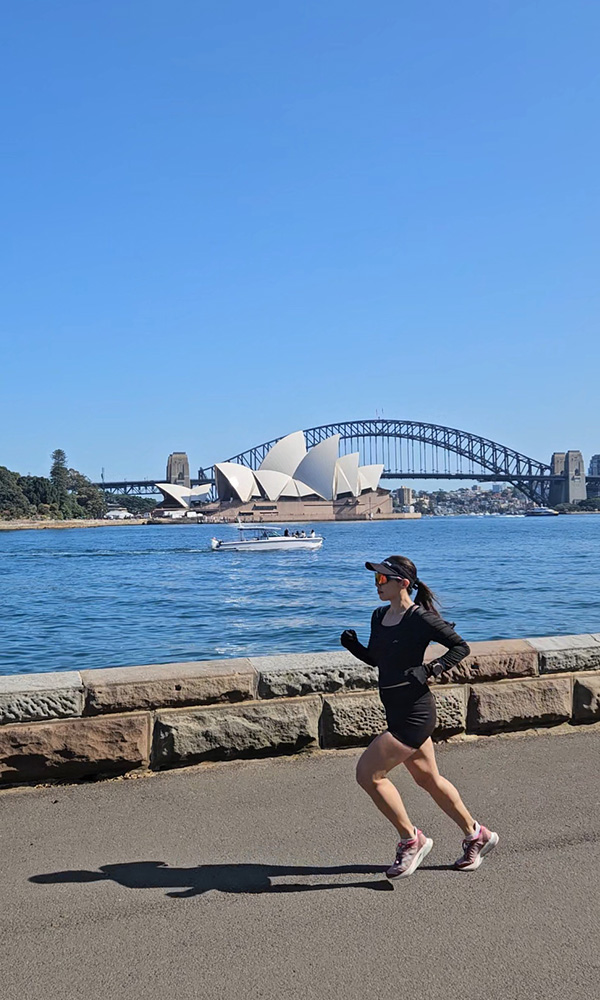
The other hotel I wanted to book (which I stayed at back in May) is in the Wynyard area. It’s a pub-style hotel, which means shared bathroom facilities, but there was never a wait to use them. It also has an elevator. Unfortunately, hotels in that area sold out pretty quickly!
When to Fly in and Out
At this time of year, Cebu Pacific only flies a few times a week to Sydney and Melbourne (versus nearly daily in the first half of the year). I snapped up a Qantas promo in June which took me to Melbourne via Sydney to land on the Tuesday, then MEL-SYD on Friday, and then SYD-MNL on the Wednesday after the race.
I’ve been in Sydney a few times since 2017 and updated my transport knowledge back in May (the light rail network wasn’t as extensive in 2018, the last time I was there pre-pandemic), so I could risk things with a Friday arrival. I also ended up buying running gloves on Thursday while I was in Melbourne because the forecast for race morning looked frosty, and I was already freezing. The Opera House tour that came with the package was held on Tuesday after the race, so you also don’t want to miss that sort of thing.
You want to give yourself enough time to find your way around, pick up any extra gear for the race if you need it, and then enjoy the city after the race.
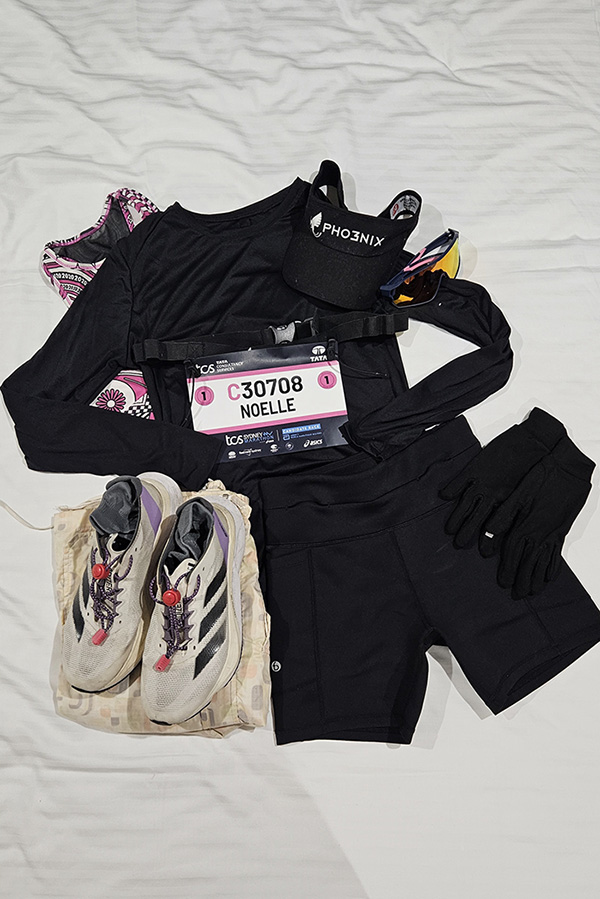
Visa Requirements
As a Philippine passport holder, I applied for a multiple-entry visa in January because I wanted to go to the Great Barrier Reef in May and then the Sydney Marathon in September. My previous visa was also multiple-entry. You can state this in a cover letter along with your planned itineraries.
Endurance Travel provided an invitation letter in February, which I could also have used as part of my visa application.
Here are the requirements for a visitor visa (subclass 600) for Philippine passport holders. You can pass your documentary requirements and pay for the application via the Australian Home Affairs website, then schedule your biometrics appointment (if needed) with VFS Global.
What to Do in Sydney
I’ve already done a lot of touristy things in Sydney in the past, so the only thing I definitely scheduled was to watch a musical performance at the Sydney Opera House. Laufey tickets were already sold out for the night before the race, so I took in a matinee violin concerto instead. Check out what’s on at the Opera House and book your ticket directly.
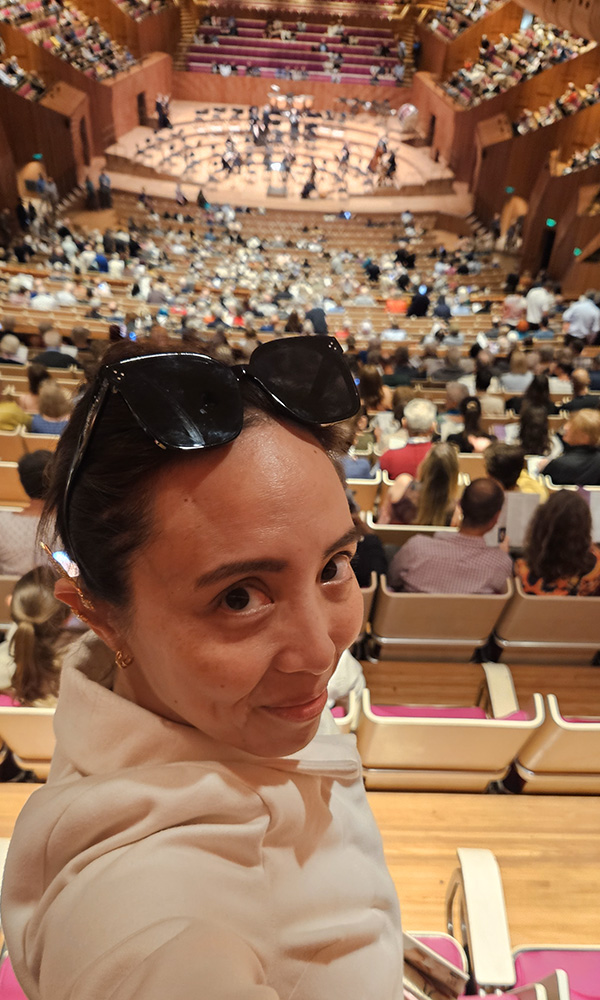
Other things to do, if you’re staying in Sydney post-race: visit the Tauronga Zoo, take a ferry from Circular Quay to Cremorne Point to cruise the harbor and see the Opera House and Harbour Bridge from the water, wander The Rocks (there’s a free museum!) and the Australian Museum (admission is free!), walk around Hyde Park, and shop at Market City in Chinatown.
Packet Pick-up and Bag Drop
For this year, the packet pick-up was held at the Sydney Convention Centre in Darling Harbour from Thursday to Saturday. Bag drop for marathon participants could also only be done at the expo using the mesh bag provided by the race organisers, so if you only want to make the slog once make sure you take your intended post-race outfit (and powder recovery drink? I had Milo in a shaker bottle) with you to the expo when you pick up your bib and finisher shirt.
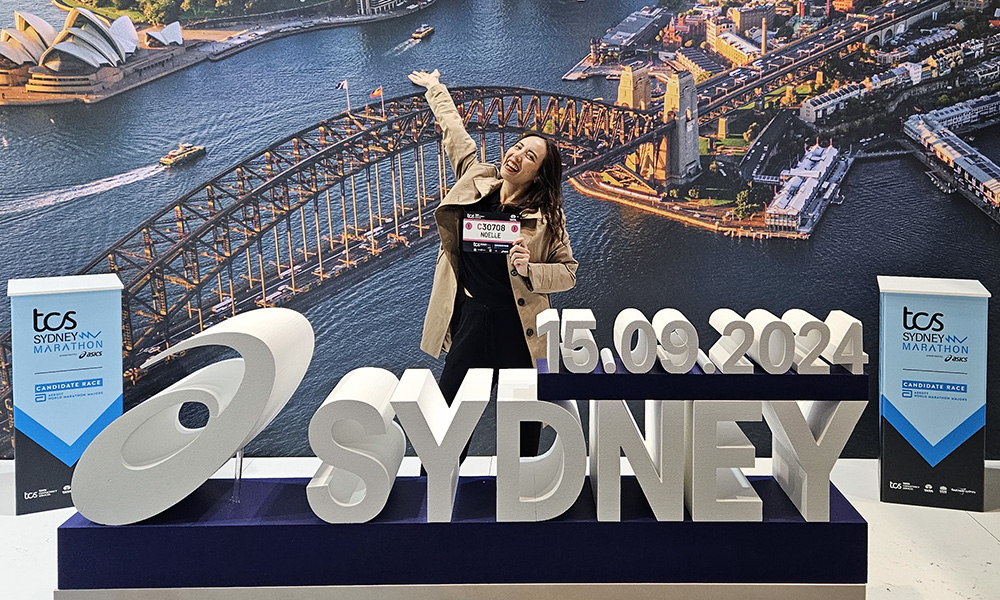
Race Day
The race bib or finisher medal will act as your transport ticket for the entire day, and since the start is at the North Sydney Oval it’s easier to just take public transport there.
From my hotel I walked a few hundred meters to Central metro station, getting off at Crow’s Nest Station (every wave had specific transport guidance because the entry points differed).
Tip #1: Get to the starting area about 90 minutes to two hours before your scheduled gunstart, because the queues for the portalets are long — and once you’re called into your corral one hour before gunstart there’s no toilets available.
Tip #2: Stay warm with throwaway clothing. Race morning it was 6 degrees Celsius at 6am, which was the earliest gunstart. It also happened to be quite a windy day, which made it even colder. I had a windbreaker which I kept on until two minutes before gunstart. Thrift shops in Sydney are more expensive than those here in the Philippines, so buy your throwaway clothing here at home.
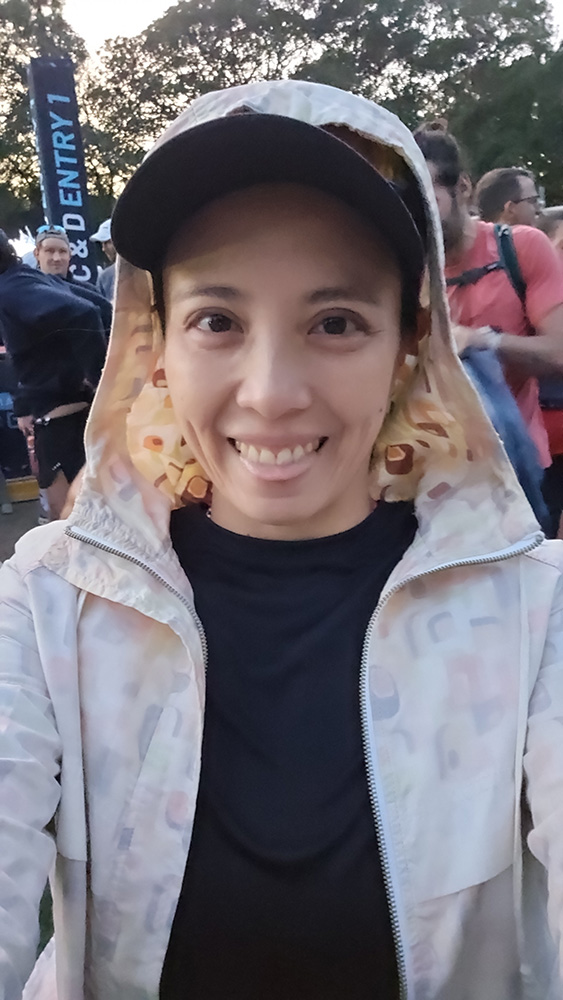
Tip #3: Find your pace group! They are screened well and “professional”, have time targets for checkpoints printed on their arms, and very useful in moderating the pace through the first 10K of the marathon, which is usually when we get over-excited and run too fast. I paid for this and ran a time four minutes slower than what I wanted.
Tip #4: Bring a disposable, collapsible water bottle with enough for at least the first 10 kilometers. The first aid station is at 5K, but everyone will be swarming those hydration tables and the next two or three stations. Also, make a beeline for the last few tables at the stations because there will be fewer people there and more cups to pick up.
Tip #5: Enjoy the race. Despite the windy weather and road closures, it felt like the whole of Sydney came out for the morning’s festivities, with entertaining signs, enthusiastic cheers, and some signature Aussie piss takes. I would even dare say that those at the tail end of the race got even bigger crowds cheering them on than those who won.
Tip #6: Prepare yourself for even more walking post-race, with a walk-off zone before you can pick up your gear bag. You can actually take photos with the Opera House background during this time (don’t mind the marshals shooing you onwards).
Tip #7: Buy the photo/video package. It was great to watch the video back and remember those specific points in the race. But don’t forget to smile when you see a camera!
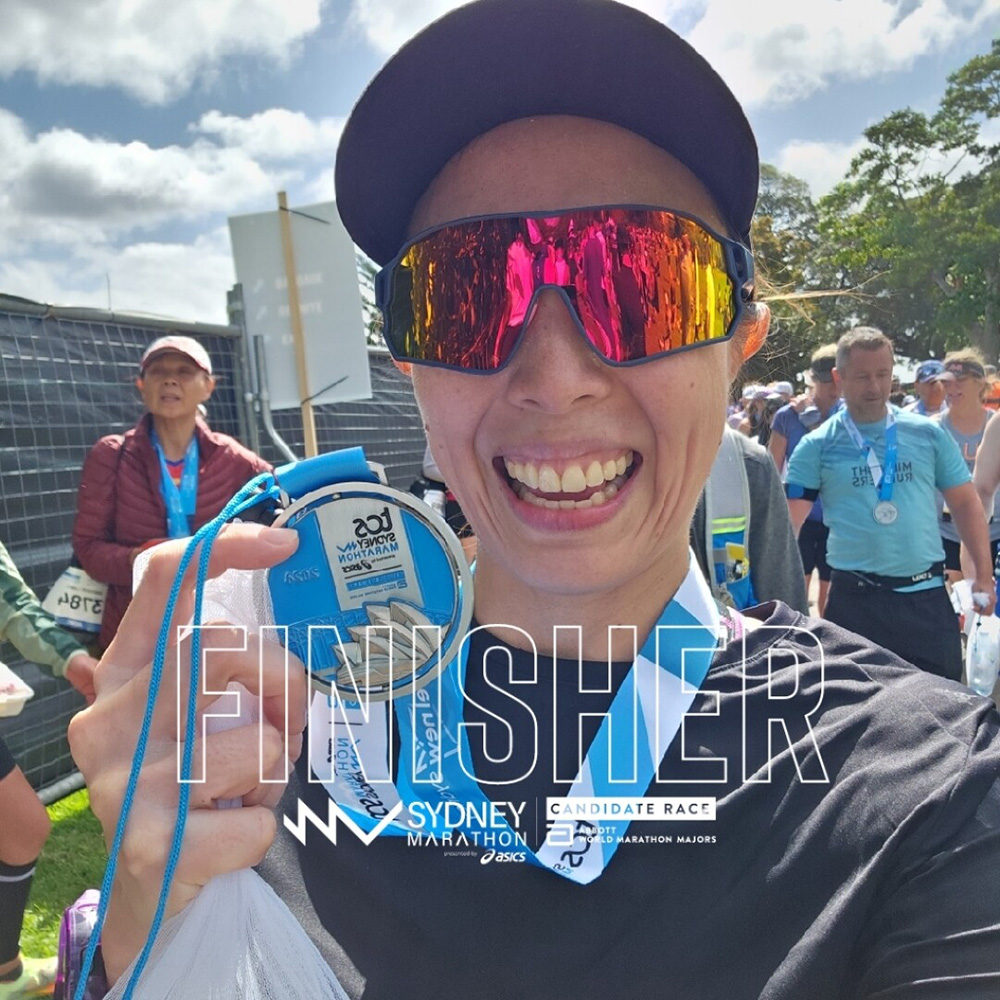
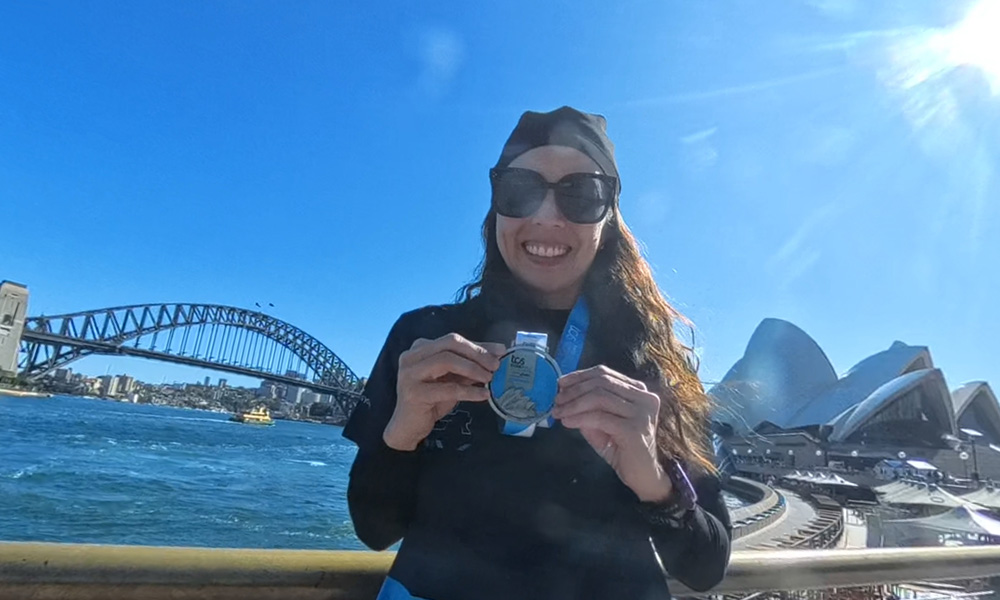
The Take-aways
I feel like with the official training plan I followed, I was actually overcooked. My Garmin says I peaked in late August, and I had a “Strained” training status for the two weeks before and after the race.
Additionally, I don’t think I had enough hill training for the elevation gain Sydney’s race course presented. At my previous marathon (Laguna Phuket International Marathon), the gross elevation gain even with big steep hills was only around 150 meters. Sydney Marathon had about double that!
What I will need in the future when I come back to do this race — and yes, I will come back — is maybe mixing in more cross-training to substitute for the “easy” runs, and training on long steady uphills like that of Bayani Road in Fort Bonifacio. (McKinley West’s hills are too short, and McKinley Hill is too steep.)
Sydney Marathon has everything I like in a destination race: the city itself is so interesting and has a lot to do and see pre- and post-race, the race course has some iconic sights and huge WOW factor, and there’s plenty of challenge so that you feel like you want to come back and better your performance. Also, despite my whining, the weather was actually perfect.
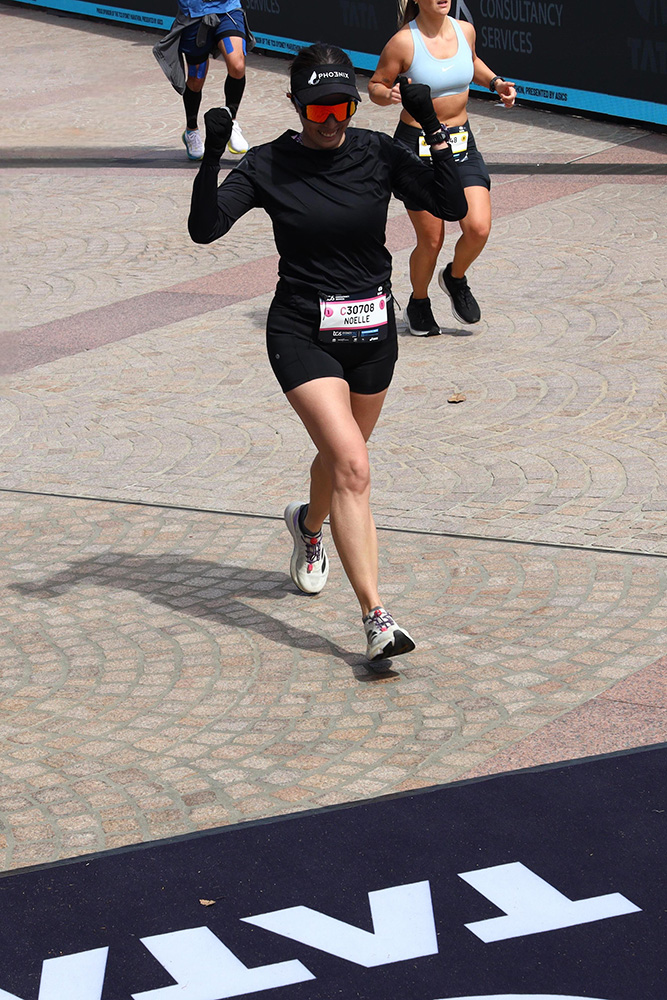
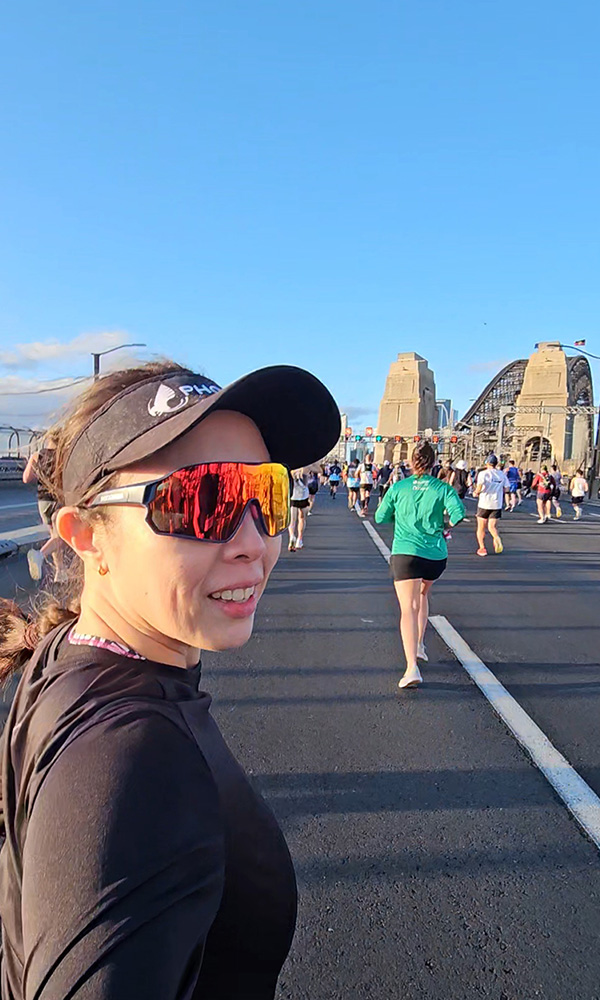

I hope to come back soon! If you have any questions about the Sydney Marathon, please drop them in the comments and I’ll do my best to answer them.

